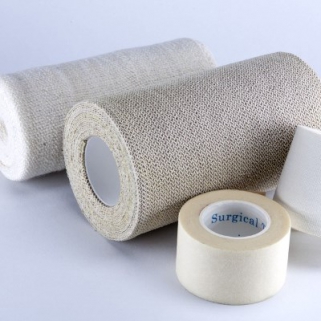Leg Ulcers Treatment Guidelines
Leg ulcers are a fairly common complication of varicose veins. They can be unpleasant to look at and very uncomfortable for the patient.
A leg ulcer is a sore caused by insufficient blood supply, which means that fairly simple wounds can fail to heal properly as they are not receiving enough oxygen. The skin can become swollen, painful and itchy. There may also be discharge or scaliness.
Without treatment, varicose vein ulcers can be a very long term problem. Even with treatment, they can take 4-6 weeks to heal.
NICE – National Institute for Health and Care Excellence Guidelines
The guidelines from NICE list out what to expect from NHS treatment for varicose vein ulcers. This would normally be carried out by a professional with expertise in wound management e.g. district nurse, tissue viability nurse.
- Cleaning the ulcer with warm water or saline
- Dressing the ulcer with low-adherent dressings, replaced weekly or more often in case of discharge/infection
- Compression therapy, usually applied to the ankle area to overcome venous hypertension (only when the infection is resolved)
- Considering prescribing pentoxifylline to aid ulcer healing, taken 3 times daily for up to 6 months
- Treating associated conditions e.g. pain, infection, oedema, eczema
- Lifestyle advice e.g. exercise, weight loss, smoking, compression stockings
- Arranging referral to specialist vascular clinics or dermatology where appropriate
The treatment guidelines focus primarily on treating the ulcers and then preventing their recurrence through compression.
Wearing the appropriate grade and type of compressions stockings, ideally for a minimum of 5 years. Lifelong use of compression stockings may be considered in people with recurrent venous leg ulcers, if acceptable to the person.
Of course, treatments will vary according to the individual patient and practitioner. For more information, please see the full NICE guidelines at https://cks.nice.org.uk/topics/leg-ulcer-venous/#!scenario
The guidelines for venous leg ulcer treatment focus primarily on maintenance.
However, some patients are keen to pursue a varicose vein removal treatment, in order to get to the root of the problem and improve blood flow to the area.
Treating Varicose Veins
Varicose vein treatment on the NHS has unfortunately been cut back over the years to a small number of very severe cases.
However, the latest advanced laser and chemical treatment options available at Cosmedics’ private London Vein Treatment Centres on a ‘walk in walk out’ basis with no overnight stay.
These treatments can be done relatively quickly as only local anaesthetic is required. The downtime and recovery are minimal, especially compared with the traditional ‘vein stripping’ which was most commonly carried out on the NHS.
Options include:
- ClariVein® treatment, where a mechanical action causes the vein to spasm and then a special chemical is delivered to seal the vein
- EVLA treatment uses a laser to destroy the veins which are then broken down by the body’s metabolic processes
- Foam sclerotherapy uses a chemical to get rid of smaller varicose and larger thread veins
- Micro surgery is also available. This may be used alongside other treatments, removing the troublesome veins to minimise risk recurrence
London Vein Treatment Centre
Varicose & Thread Vein Treatment
Cosmedics Skin Clinics offer private treatment for thread veins and varicose veins at their London Vein Treatment Centre. They also offer varicose vein ultrasound scanning for proper diagnosis of any ‘underlying’ vein problems.
For more information or to book a consultation, please complete the form on this web page or call 020 7386 0464.




Leave a Reply
Want to join the discussion?Feel free to contribute!